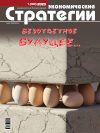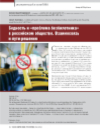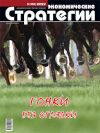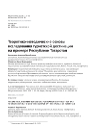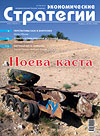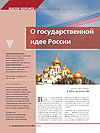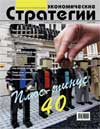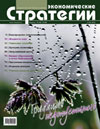On Some Observations of the Fundamental Laws of Nature
DOI: 10.33917/es-3.189.2023.42-49
The article describes an observed natural phenomenon, consideration of which hypothetically improves the accuracy of natural processes modeling.
References:
1. Arshinov V.I., Svirskii Ya.I. Slozhnostnyi mir i ego nablyudatel’. Chast’ pervaya [Complex World and its Observer. Part One]. Filosofiya nauki i tekhniki, 2015, vol. 20, no 2, pp. 70–84.
2. Arshinov V.I., Svirskii Ya.I. Slozhnostnyi mir i ego nablyudatel’. Chast’ vtoraya [Complex World and its Observer. Part Two]. Filosofiya nauki i tekhniki, 2016, vol. 21, no 1, pp. 78–91.
3. Arshinov V.I., Budanov V.G. Sotsiotekhnicheskie landshafty v optike semioticheski-tsifrovoi slozhnostnosti [Sociotechnical Landscapes in the Optics of Semiotic-Digital Complexity]. Voprosy filosofii, 2020, no 8, pp. 106–116.
4. Foerster H. Notes pour un epistemologie des objetsvivants. In Morin E. and Piatelli-Palmerini M. (Eds). L’Unité de L’Homme, Editions du Seuil, Paris, 1974, pp. 401–417.
5. Spencer-Brown G. Laws of Form. N.Y., Division of Elsevier-Dutton Publishing, 1979, 169 p.
6. Maturana U. Biologiya poznaniya [Biology of Cognition]. Yazyk i intellect, Moscow, Progress, 1996, 416 p.
7. Feiman R. KED — strannaya teoriya sveta i veshchestva [QED: The Strange Theory of Light and Matter]. Moscow, Astrel’, Poligrafizdat, 2012, 191 p.
8. Prigozhin I., Stengers I. Poryadok iz khaosa. Novyi dialog cheloveka s prirodoi [Order out of Chaos. New Dialogue Between Man and the Nature]. Moscow, Editorial URSS, 2014, 304 p.
9. Nikolis G., Prigozhin I. Samoorganizatsiya v neravnovesnykh sistemakh. Ot dissipativnykh struktur k uporyadochennosti cherez fluktuatsii [Self-Organization in Nonequilibrium Systems: From Dissipative Structures to Order Through Fluctuations]. Moscow, Mir, 1979, 512 p.
10. Bozbei L.S., Kostikov A.O., Tkachenko V.I. Elementarnaya konvektivnaya yacheika v sloe neszhimaemoi, vyazkoi zhidkosti i ee fizicheskie svoistva: Materialy Mezhdunarodnoi konferentsii MSS-14 “Transformatsiya voln, kogerentnye struktury i turbulentnost’”. Moskva, Institut kosmicheskikh issledovanii,
2014 g. [Elementary Convective Cell in an Incompressible Viscous Fluid Layer of and Its Parameters: Proceedings of the MSS-14 International Conference “Transformation of Waves, Coherent Structures and Turbulence”. Moscow, Space Research Institute]. Moscow, 2014, pp. 322–328.
11. Pikel’ner S.B. Dinamika solnechnoi atmosfery [Solar Atmosphere Dynamics]. Uspekhi fizicheskikh nauk, 1966, vol. 88, no 3, pp. 505–523.
12. Belousov B.P. Periodicheski deistvuyushchaya reaktsiya i ee mekhanizm: Sb.: Avtovolnovye protsessy v sistemakh s diffuziei [Periodically Acting Reaction and its Mechanism: Collection: Autowave Processes in Systems with Diffusion]. Gor’kii, Izd-vo GGU, 1951, pp. 76.
13. Belousov B.P. Periodicheski deistvuyushchaya reaktsiya i ee mekhanizm: Sb. referatov po radiatsionnoi meditsine za1958 g. [Periodically Acting Reaction and its Mechanism. Collection of Abstracts on Radiation Medicine]. Moscow, Medgiz, 1959, p. 145.




